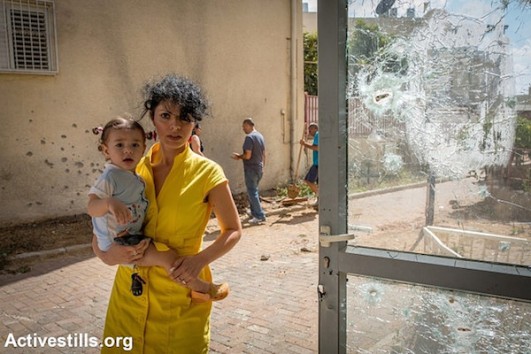After 17 years of war, Israel’s leaders still fail to understand that no amount of military force will make Gaza disappear.
By Avi Dabush

I was born and raised in Ashkelon; now I live near Sderot. I still remember Gaza, just an arm’s length away. No matter how much military force Israel uses, Gaza is not going anywhere. Here are five things you can see five kilometers from the Gaza border that are impossible to see from Jerusalem or Tel Aviv.
We are losing. There’s no doubt that the Gazans are losing but what our leaders don’t see is that we’re losing, too. We’re losing an entire generation that has grown up under continuous rocket fire and the traumas that come with it. We’re losing the tremendous potential prosperity that the western Negev could provide. We’re losing so much energy. We believe in the illusion that significant financial investment (which exists, thanks to the Israeli government) can cover these losses. It can’t. One needs to live here to understand that. The Gazans are losing far more but we are also losing.
Gaza is here. When tires burn in Gaza, Israeli towns are strangled by the smoke. Gaza’s untreated sewage flows into nearby streams and pollutes the environment. The sewage also reaches the beaches of Ashkelon and Zikim, sometimes forcing them to close. Health experts fear regional epidemics could break out because of the humanitarian crisis in Gaza. Hamas is a criminal organization that mistreats its own people, but what brought thousands of people to protest at the Gaza-Israel separation barrier, despite the very real mortal danger, was despair. And the despair is not going to end. At first we joked about “flying pipes,” but then we had to deal with rockets of every kind. We have dealt with the tunnels and with attempts to reach Israel through them. And we will manage, it seems, to deal with the Molotov cocktail kites. But even if we close our eyes, Gaza will not disappear.
The solution is on the table. It always was. Seventeen years of war —since the first Qassam rocket hit Sderot — can only end with a peaceful resolution. Call it a hoodna, a ceasefire, or a peace deal. Israel must aid in rebuilding Gaza’s infrastructure, provide work visas to Gazans, allow for greater commercial freedom, and help develop a functional port. Hamas must commit to holding its fire for years to come. And while it won’t agree to disarmament, perhaps it will agree to removing some of its military posts or reducing its arsenal. There will also have to be a prisoner exchange and the return of the bodies of Israeli soldiers. This is more or less what Hamas proposed recently. Our creativity in war-making must be diverted into political creativity and cooperation with Egypt, the European Union, the United States, and even Turkey to reach a resolution.
Military force is the weakest weapon in our arsenal. There is no question here who is stronger. Israel’s military capabilities far exceed those of Hamas. Hamas cannot defeat the IDF or even prevent the re-occupation of the Gaza Strip (at a heavy price), if that is what Israel decides to do. However, military power is a limited power. It does not solve the problems of electricity and water shortages and unemployment. It cannot overcome the despair or defeat the desire for freedom. The hubris that comes with military force puts Israeli in situations where force is the only option. And violence only begets more violence. Seventeen years of war has proven that this doesn’t work. But what would? Diplomatic maneuvering, renewed contact with the Palestinian authority. Economic investment. There are thousands of other ways — it is time to pursue them.
We share this place. When one stands on Kobi Hill, on the western edge of Sderot three kilometers from Gaza, one can see this clearly. Gaza is here. And I’m not talking about the military buffer zone. People’s houses are really just a short distance away. As someone born in 1976 and raised in Ashkelon, my memories of Gaza are still alive. From childhood until the First Intifada. Then Gush Katif before the Oslo Accords. Thousands of Gazans came to work in Israel’s southern cities every morning, and thousands of Israelis came to the markets, the coffeehouses, and the beach in Gaza. To be sure, there were power relations — I do not miss that. But there was a kind of mutual dependence. To this day, many Israelis and Sderot residents have deep, real, and personal ties in Gaza. As recently as 2006, Gazans could still come and work in the area. This living memory could transform into a vision for peace, bolstered by meaningful relationships.
Avi Dabush one of the leaders of the Periphery Movement and a member of the Meretz Party leadership. A version of this post first appeared in Hebrew at Local Call. Read it here.
